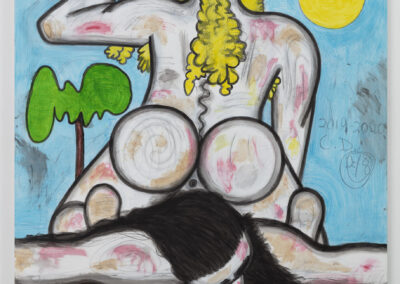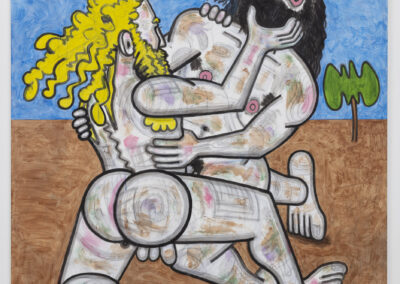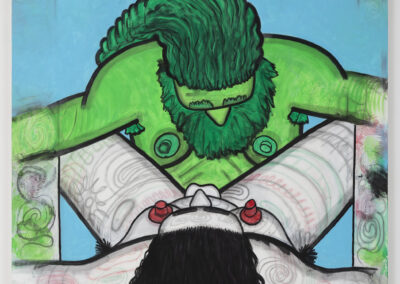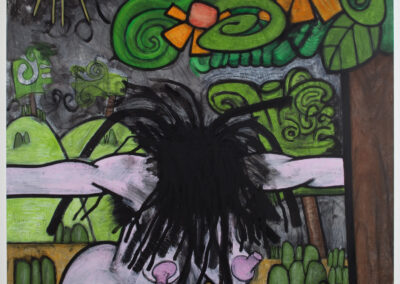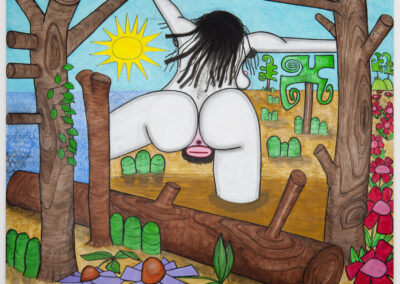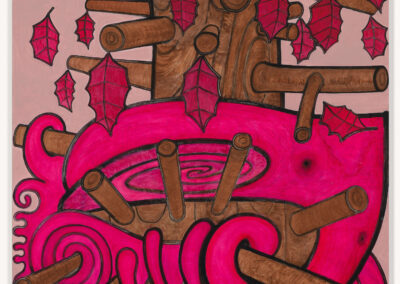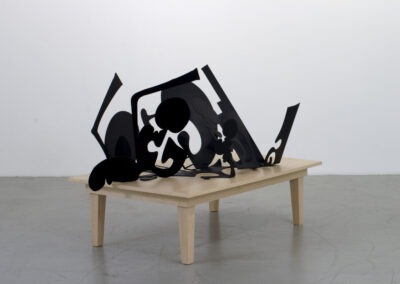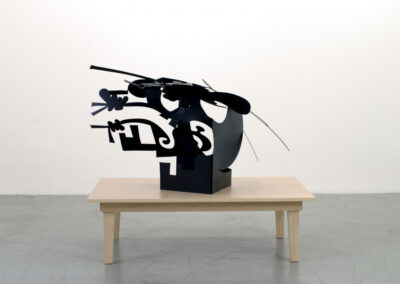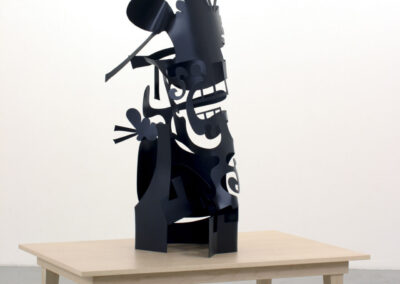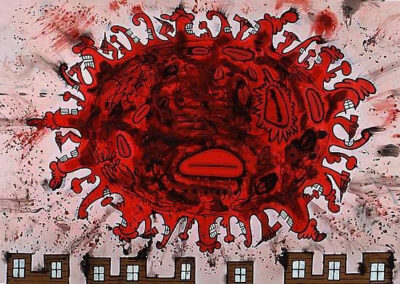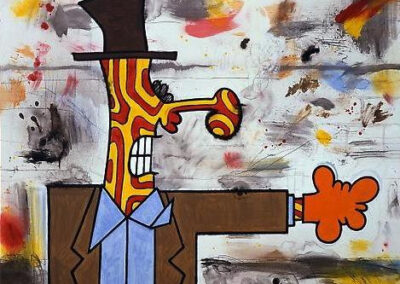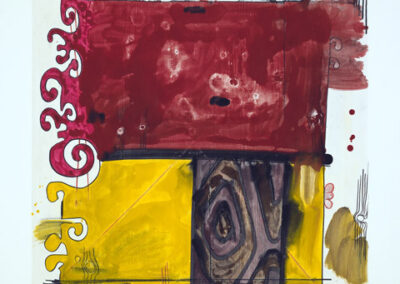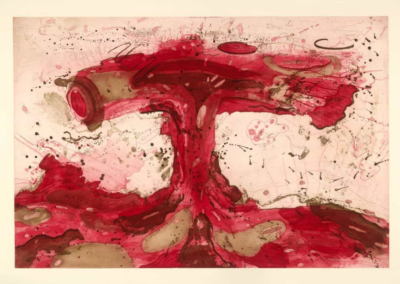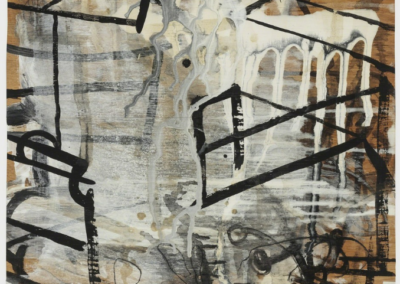Our next Artist You Need To Know is Caroll Dunham.
Carroll Dunham is an American painter and sculptor who’s been exhibiting since the 1970s, but whose artwork began to garner significant attention in the 1980s. An artist who straddles abstraction and figurative aesthetics, Dunham is known for his conceptual approach to artmaking.
Johanna Burton (who has been the director of MOCA since 2021) has written that “Dunham’s career can be characterized by its rigorous indefinability, as his works dip freely into the realms of abstraction, figuration, surrealism, graffiti, pop, even cartoons, without ever settling loyally into any one of them.” In a manner that sounds crass but was meant as praise, David Pagel, in a Los Angeles Times review, stated that Dunham’s painters are “vulgar beyond belief…” (from here)
His “hallucinogenic paintings feature cartoonish, humanoid forms with exaggerated limbs and exposed sexual or digestive organs, all rendered in loose, raw brushstrokes and saturated palettes. His work takes inspiration from Pop art, Surrealism, and Abstract Expressionism, evoking the humor of R. Crumb’s comics and the specific compositional qualities, linework, and color palettes of Arshile Gorky, Paul Gauguin, and Philip Guston. Dunham’s early drawings and paintings veer more towards abstraction, though biomorphic forms have been a constant throughout his evolving practice.” (from here)
In a joint-talk given at MOMA with the painter Chuck Close, Carroll Dunham provided the following definition of painting:
“Painting is a relatively recently manifestation of humanity’s ancient effort to understand and exploit pictorial space generally understood to consist of sheets of colored paste spread manually across primarily rectilinear planar supports embodying illusionistic or quasi-narrative properties although each of the previous characteristics have been challenged and contradicted to great theoretical and expressive effect without the loss of basic categorical integrity testimony to paintings nature as both bounded and infinite and its ability to absorb apparently conflicting attitudes on the part of its creators.
Painting operates at the nexus of intersubjective experience and consensual reality relying on both for its subject matter while remaining stubbornly self-referential, and its content extends into the areas we call psychological social, material (in both the philosophical and economic senses of the word) and—for the lack of a better term—spiritual giving it unusual utility as a tool for studying the evolution of the self of socio-cultural systems and of the complex reciprocities between the two, strikingly manifest within the apparent disconnect within paintings dual nature as a repository of capital and a facilitator of profound contemplation, a perfect storm of the crass, the sacred and the intimately personal.” (from here, with an audio file where you can listen to the entire conversation)
Dunham has exhibited in New York, Brussels, Paris, London, Berlin, Mexico City, and Los Angeles: a more in depth listing of his exhibitions can be found here. His work can be found in the collections of the Art Institute of Chicago, the Museum of Modern Art, the Tate, the Whitney Museum of American Art, the Museum of Contemporary Art, Los Angeles, and many other institutions.
He lives and works in New York City and Cornwall, Connecticut with his wife, the artist Laurie Simmons. Simmons was a previously featured Artist You Need To Know as well: that can be seen here.
Much more of Dunham’s artwork can be seen here, at his site. An engaging interview with Dunham about his work and the larger cultural milieu he exists within can be read here.

